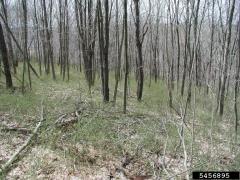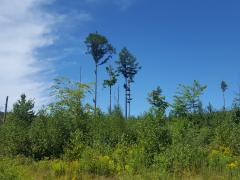Common Problems of Ash Trees
This guide was developed by Iowa State University.
This guide was developed by Iowa State University.

As we progress into summer heat waves and holiday vacations, many plants have flowered and started to go to seed. One invasive plant, Japanese barberry (Berberis thunbergii), at this point in the season (July/August) will have seeds forming and ripening.
There has been a new detection of Emerald Ash Borer (EAB) in Derby Line, Vermont. This is the first confirmed detection in Orleans County.

Young Forest, the forest type that is dominated by dense shrubs and trees less than 20 years old, is an extremely important cover type for wildlife in Vermont. More than 60 wildlife species – including mammals, birds, reptiles, and insects – need young forest to survive.
Although you might think we already have our fair share of forest health issues to deal with here, it’s time for Vermont to start thinking about yet another forest disease on the horizon – oak wilt. Oak wilt affects the vascular systems of oak trees and is caused by the fungus Bretziella fagacearum (formerly Ceratocystis fagacearum). Although there is still debate on whether this fungus occurs naturally here in North America or has been introduced from elsewhere, one thing not up for debate is that this fungus is a tree killer.